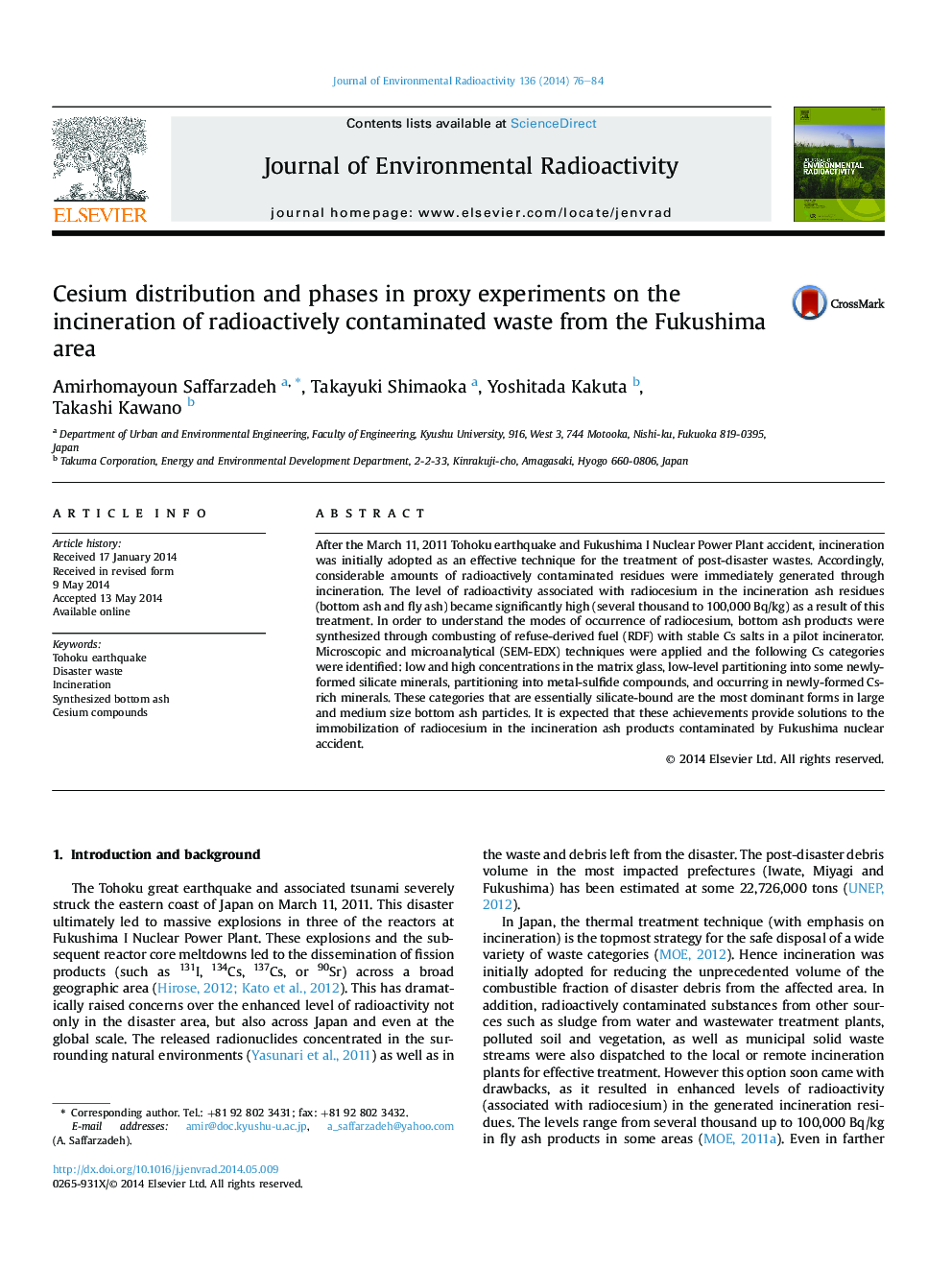| کد مقاله | کد نشریه | سال انتشار | مقاله انگلیسی | نسخه تمام متن |
|---|---|---|---|---|
| 8083026 | 1521597 | 2014 | 9 صفحه PDF | دانلود رایگان |
عنوان انگلیسی مقاله ISI
Cesium distribution and phases in proxy experiments on the incineration of radioactively contaminated waste from the Fukushima area
ترجمه فارسی عنوان
توزیع و فازهای سزیم در آزمایش های پروکسی بر سوزاندن زباله های آلوده رادیواکتیو از ناحیه فوکوشیما
دانلود مقاله + سفارش ترجمه
دانلود مقاله ISI انگلیسی
رایگان برای ایرانیان
کلمات کلیدی
موضوعات مرتبط
مهندسی و علوم پایه
مهندسی انرژی
انرژی هسته ای و مهندسی
چکیده انگلیسی
After the March 11, 2011 Tohoku earthquake and Fukushima I Nuclear Power Plant accident, incineration was initially adopted as an effective technique for the treatment of post-disaster wastes. Accordingly, considerable amounts of radioactively contaminated residues were immediately generated through incineration. The level of radioactivity associated with radiocesium in the incineration ash residues (bottom ash and fly ash) became significantly high (several thousand to 100,000Â Bq/kg) as a result of this treatment. In order to understand the modes of occurrence of radiocesium, bottom ash products were synthesized through combusting of refuse-derived fuel (RDF) with stable Cs salts in a pilot incinerator. Microscopic and microanalytical (SEM-EDX) techniques were applied and the following Cs categories were identified: low and high concentrations in the matrix glass, low-level partitioning into some newly-formed silicate minerals, partitioning into metal-sulfide compounds, and occurring in newly-formed Cs-rich minerals. These categories that are essentially silicate-bound are the most dominant forms in large and medium size bottom ash particles. It is expected that these achievements provide solutions to the immobilization of radiocesium in the incineration ash products contaminated by Fukushima nuclear accident.
ناشر
Database: Elsevier - ScienceDirect (ساینس دایرکت)
Journal: Journal of Environmental Radioactivity - Volume 136, October 2014, Pages 76-84
Journal: Journal of Environmental Radioactivity - Volume 136, October 2014, Pages 76-84
نویسندگان
Amirhomayoun Saffarzadeh, Takayuki Shimaoka, Yoshitada Kakuta, Takashi Kawano,
